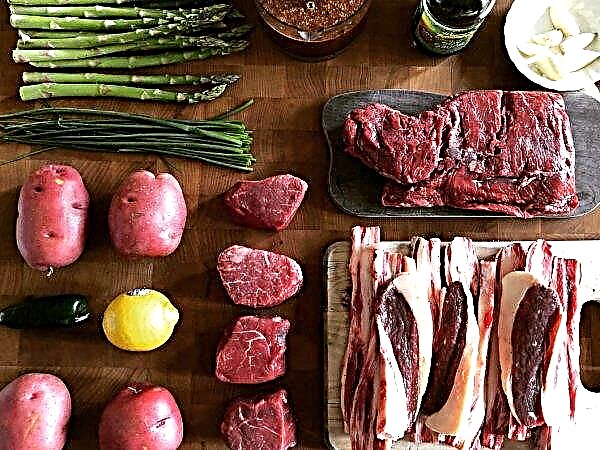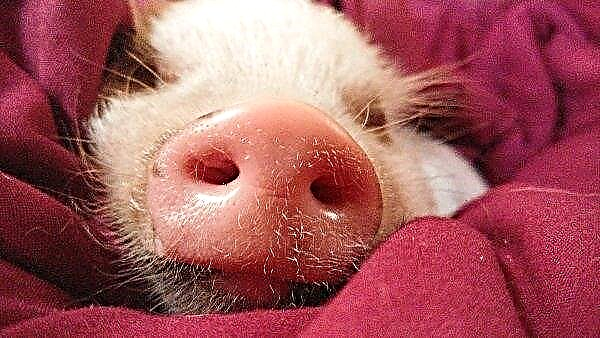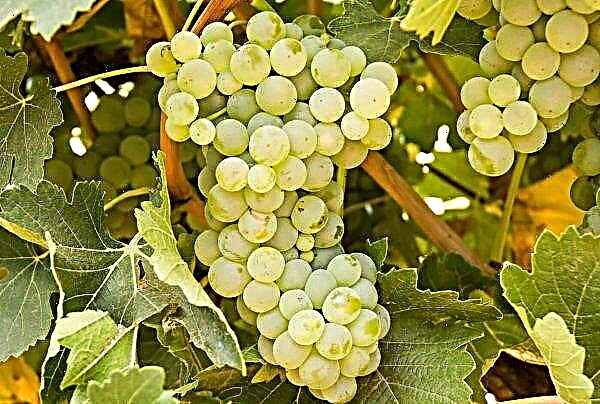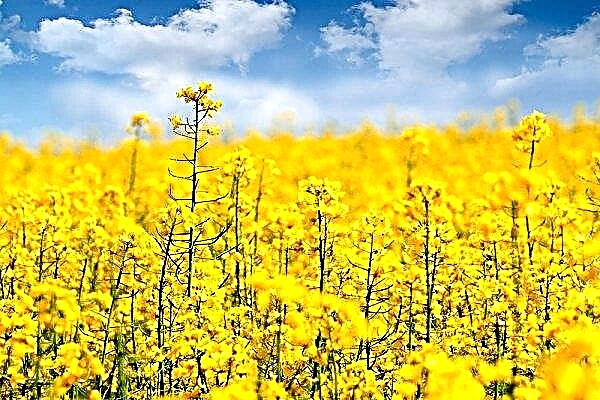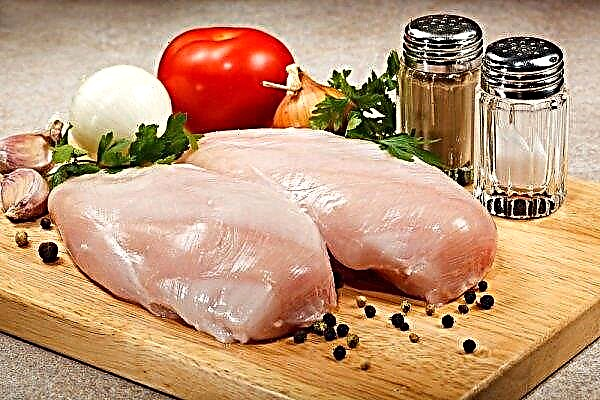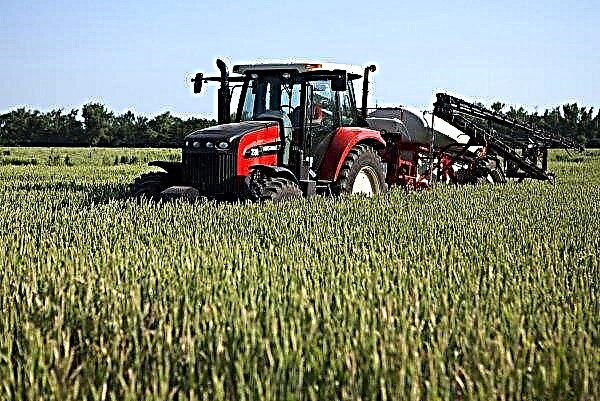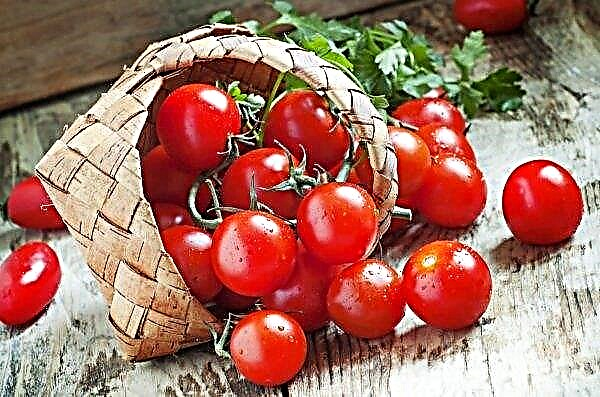Many people mistakenly consider Beijing and Chinese cabbage to be the same plant, but in reality they are completely different cultures, although they have many common characteristics. How exactly they are similar and what differences between them cannot be ignored - this will be discussed in this article.
Description of Beijing and Chinese cabbage
The distinctive features of Peking and Chinese (often called Pak Choi or Bok Choi) are visible to the naked eye, while both plants have their own individual chemical composition. Among the main distinguishing characteristics of the "appearance" of plants, the following can be distinguished:
- Features petiole cabbage. In the Chinese variety, it is coarser and quickly goes into the central part of the leaf plate, which is why this variety is called "celery".
- The size of the plant. The "Chinese" is usually shorter than the "Beijing" and looks more loose, which is explained by the loose pressing of the leaves to each other. Sometimes a petiole of Chinese cabbage takes up to 2/3 of the total mass of the plant, and its color varies from white to greenish.
- Features of sheet plates. The leaves of the Peking variety are much more delicate than the leaves of the Chinese, in addition, their color is paler, and the edges are more jagged and wavy. The "Chinese" has only a leaf shape, but the "Beijing" can be half-pumped or form a tight forks.
 Otherwise, both options are very similar in appearance, and if you want to find additional differences, you should study the chemical composition and calorie content of each of them
Otherwise, both options are very similar in appearance, and if you want to find additional differences, you should study the chemical composition and calorie content of each of themChemical composition and calorie content
Many types of cabbage have almost the same composition, what to speak of such close "relatives" as the Chinese and Beijing varieties. However, there are some differences between them in terms of chemical composition, so it is worth examining each plant more closely.
100 g of Bok-choy Chinese cabbage contains only 13 kcal, and the ratio is distributed as follows:
| BZHU | Vitamins and Minerals |
|
|
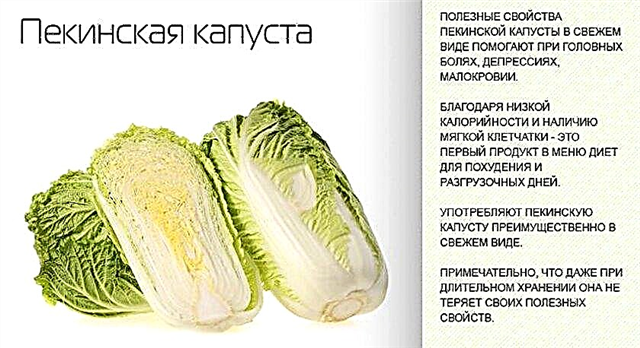
Peking cabbage is more high-calorie and per 100 g of product accounts for 16 kcal:
| BZHU | Vitamins and Minerals |
|
|
From the data presented it can be seen that Beijing cabbage is more useful, although it cannot be said that the Chinese variety is not worthy of the attention of consumers. Given the small differences in taste (Pekinga is a bit more tender in taste), it is worth trying both options, especially since there are a lot of recipes for their preparation.
Did you know? Beijing cabbage is useful not only in fresh form, but also in stew, because only one plate of such food contains 2/3 of the daily intake of vitamin C and the daily intake of vitamin A.
The history of the origin of two plants
Both representatives of culture described came from China, but a little more is known about Chinese cabbage. As a cultivated plant, it began to be grown on Chinese territory in the 5th – 6th centuries BC. e., and it was used not only as a vegetable, but also as a valuable source of oil. Starting from the North China regions, the headed forms of this vegetable came to Japan and the countries of Indochina, where today they are grown as one of the main varieties. A little later, on the basis of a large number of Japanese and already well-known Chinese varieties, commercial varietal varieties appeared in the middle of the twentieth century, characterized by rapid ripening and abundant crops.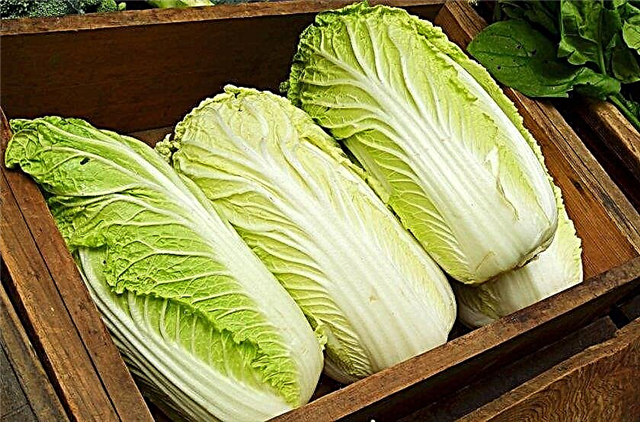 In the United States and Europe, many did not know about Chinese cabbage until the 70s of the last century, since the plant was grown in limited quantities and was not so widespread in supermarkets.The crop growing boom in these countries came in the 90s, when this plant began to grow in large quantities in both open and closed soils. In Russia, the cultivation of Beijing cabbage began to be massively engaged only after the 2000s.
In the United States and Europe, many did not know about Chinese cabbage until the 70s of the last century, since the plant was grown in limited quantities and was not so widespread in supermarkets.The crop growing boom in these countries came in the 90s, when this plant began to grow in large quantities in both open and closed soils. In Russia, the cultivation of Beijing cabbage began to be massively engaged only after the 2000s.
Important! Often, the term “Chinese cabbage” refers to the popular Peking variety, which is not surprising since the plant came from China, but in order to avoid confusion it is better to adhere to the generally accepted opinion: Chinese cabbage is a leaf bok choy.
Chinese cabbage is not so common and it is rarely found on the shelves of Russian stores. The plant also began to spread throughout the world from the territory of China and, according to some information, it was started to grow in the Yangtze River Delta.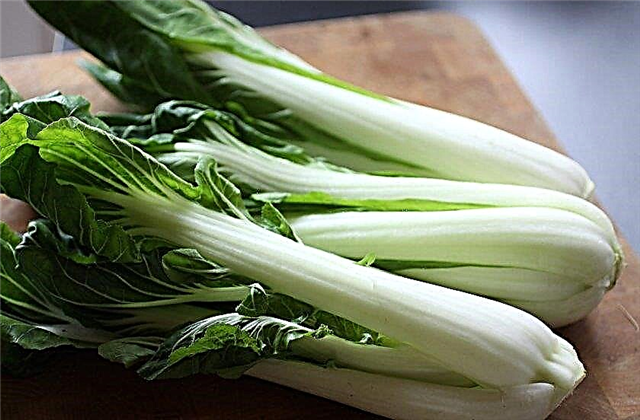 During the reign of the Ming Dynasty (1368–1644), the leaves of the culture were successfully used for culinary and medical purposes. In the 14th century, Chinese cabbage came to the north of the country and soon its volumes significantly increased. On the shelves of European and American stores, cabbage plants appeared only in the second half of the twentieth century, and in Russia they began to be grown at the end of the 90s.
During the reign of the Ming Dynasty (1368–1644), the leaves of the culture were successfully used for culinary and medical purposes. In the 14th century, Chinese cabbage came to the north of the country and soon its volumes significantly increased. On the shelves of European and American stores, cabbage plants appeared only in the second half of the twentieth century, and in Russia they began to be grown at the end of the 90s.
Beneficial features
Given the vitamin-mineral composition of both described plants, it is not surprising that they have a positive effect on the human body to one degree or another. The useful properties of Peking and Chinese often coincide, but it is still worthwhile to study the characteristic features of each species separately.
Did you know? The Chinese were the first to come up with sauerkraut recipes, and at first wine was used to soak the vegetable. The slaves who erected the Great Wall of China were fed with a prepared and insisted dish.
Beijing cabbage
- This variety of cabbage has a large number of positive characteristics, and its following beneficial properties include the following effects:
- Beneficial effect on the nervous system. Individual components of the plant, such as the lactucin alkaloid, act as a natural antidepressant, thanks to which you can not only improve the emotional state, but also relieve fatigue and get rid of headaches.
- Replenishment of fiber in the body, which favorably affects the digestive system and normalizes the process of defecation.
- Elimination of puffiness due to the removal of excess fluid.
- The fight against anemia, which contributes to increased production of blood cells, the prevention of toxic and fatty liver damage, the removal of bad cholesterol from the body.
- Increasing the body's immune forces and strengthening the vascular system, due to the high content of ascorbic acid (there is much more vitamin C in Beijing cabbage than in lettuce).
- Stabilization of metabolic processes and normalization of cholesterol levels in the body, thereby supporting important intracellular reactions (for example, vitamin A promotes smooth protein synthesis, and lysine slows down the natural aging process by cleansing the blood of unwanted protein compounds).
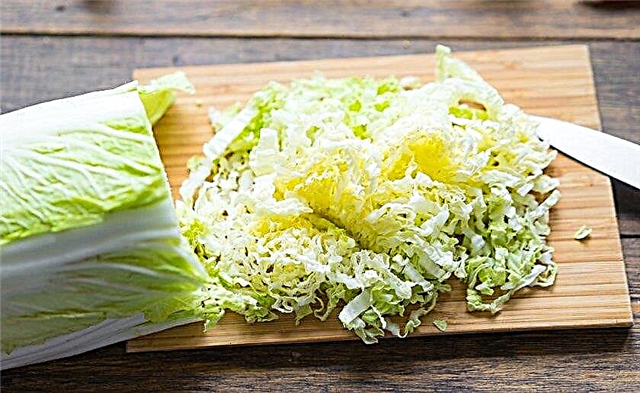 Also, do not forget about replenishing the general vitamin-mineral reserves of the body, because there are a lot of components important for humans in Beijing cabbage, which can be seen once again by reviewing its chemical composition
Also, do not forget about replenishing the general vitamin-mineral reserves of the body, because there are a lot of components important for humans in Beijing cabbage, which can be seen once again by reviewing its chemical compositionChinese cabbage
Many of the beneficial properties of Chinese kale coincide with the similar influence of Peking, and due to the presence of the same components in its composition:
- lysine - perfectly cleanses the blood, splitting foreign proteins and increasing the immune defense of the human body;
- lactucin - One of the most important and most useful components, due to which metabolic processes are significantly accelerated, blood pressure normalizes and a person's sleep improves.
Important! Chinese cabbage can be stored for a long time without losing the basic taste and useful properties, but in order to preserve the plant's benefits for up to eight months or longer, it is better to freeze the "Chinese".
With regular use of Chinese cabbage, it will help eliminate signs of chronic fatigue, will fight headaches and migraines, and will also improve the general well-being of patients with diabetes mellitus, gastric ulcer and duodenal ulcer. In addition, the juice from the petioles of this plant has good painkillers, so it is recommended for menstrual pain in women and other symptomatic pain manifestations in people of different sexes.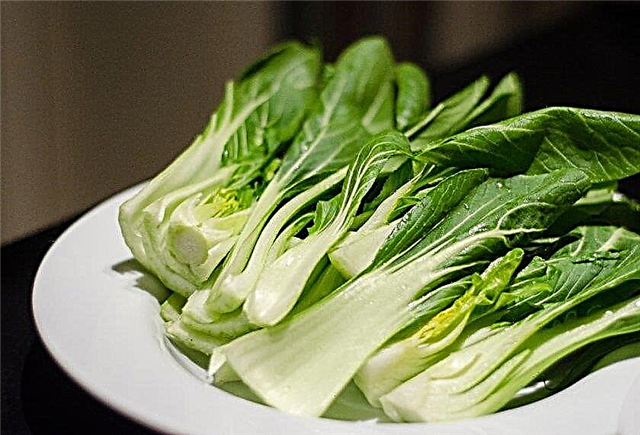 Chinese cabbage is a tool for cancer prevention, cleanses the body of harmful chemicals
Chinese cabbage is a tool for cancer prevention, cleanses the body of harmful chemicals
Application features
The features of the application of both types of cabbage described directly depend on the goals of the consumer, because plants are successfully used not only in cooking, but also in traditional medicine and even cosmetology, and what exactly they can be useful in one or another sphere of human life - you will now find out.
In cooking
Chinese cabbage is an excellent ingredient for many dishes, regardless of how they are prepared. However, the most popular varieties of such food usually include salads, side dishes, pickled dishes and soups.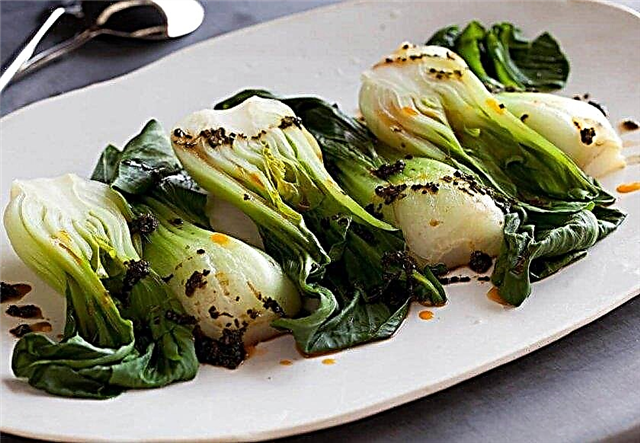 This vegetable goes well with other vegetable crops and can be used with a variety of spices. As for the popular Beijing, its main area of application is the preparation of all kinds of salads, sandwiches, traditional pickled, salted and pickled preparations. The cabbage juice deserves special attention, which, in addition to a large number of useful properties, also has a rather interesting taste, due to which it can become a good addition to vegetable dishes and side dishes.
This vegetable goes well with other vegetable crops and can be used with a variety of spices. As for the popular Beijing, its main area of application is the preparation of all kinds of salads, sandwiches, traditional pickled, salted and pickled preparations. The cabbage juice deserves special attention, which, in addition to a large number of useful properties, also has a rather interesting taste, due to which it can become a good addition to vegetable dishes and side dishes.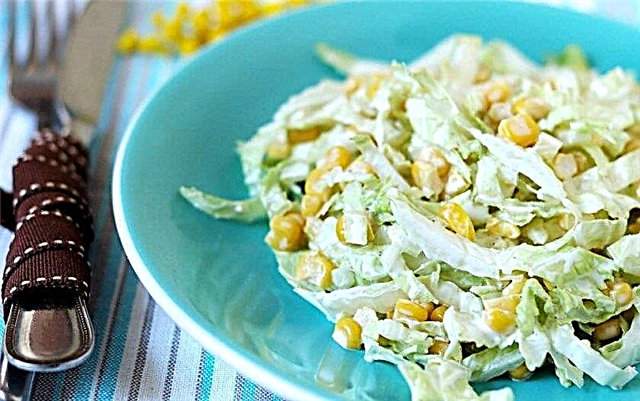 Salads are usually very tender and suitable for consumption at any time of the day.
Salads are usually very tender and suitable for consumption at any time of the day.
In folk medicine
Both types of cabbage have been used for medical purposes since ancient times, and although now such a practice is becoming more and more a thing of the past, there are still people who resort to this kind of alternative treatment.
Chinese cabbage perfectly levels the symptoms of diabetes (prevents the absorption of sugar from other products) and helps to normalize the condition in case of cardiovascular problems. In the latter case, the potassium present in the vegetable plays a significant role, because it is the human heart that needs it most of all. In addition, a properly prepared plant can help with destabilization of intestinal microflora, colitis.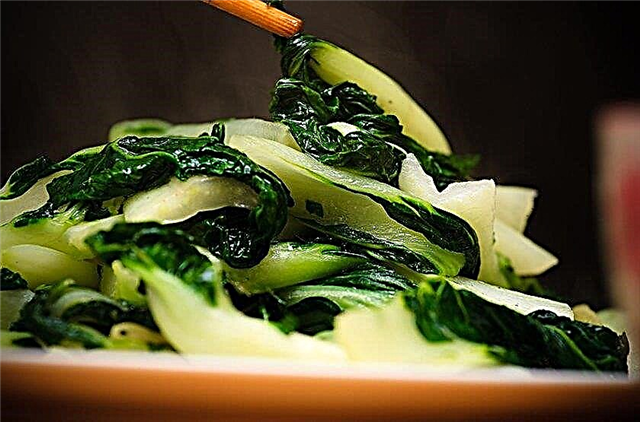 At the remission stage, boiled Chinese cabbage and juice from it will be appropriate, but in order not to harm the body, you should not use such a drink in its pure form, it is better to first dilute it with a carrot product, which helps to eliminate excessive gas formation. In ancient times, Chinese cabbage juice served as an excellent healing agent for wounds, and the liquid mixed with egg yolk was especially effective.
At the remission stage, boiled Chinese cabbage and juice from it will be appropriate, but in order not to harm the body, you should not use such a drink in its pure form, it is better to first dilute it with a carrot product, which helps to eliminate excessive gas formation. In ancient times, Chinese cabbage juice served as an excellent healing agent for wounds, and the liquid mixed with egg yolk was especially effective.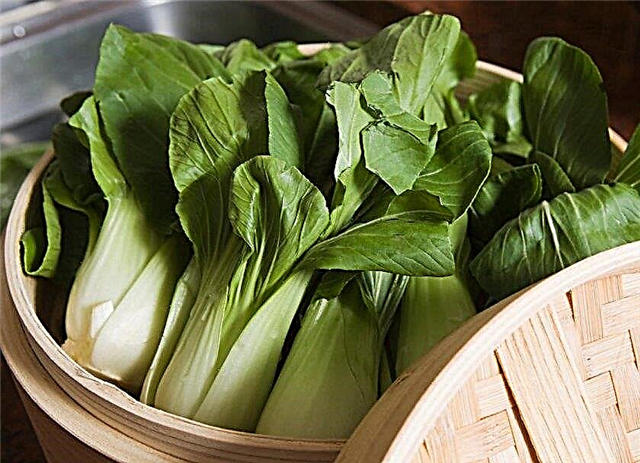 Fresh cabbage leaves help in the treatment of burns, and ready-made preparations based on parts of bok-choy are often used in the fight against inflammatory processes and oncological conditions
Fresh cabbage leaves help in the treatment of burns, and ready-made preparations based on parts of bok-choy are often used in the fight against inflammatory processes and oncological conditions
- Peking cabbage, also, will be appropriate in a number of cases, but in addition to them, the plant can be used in some other situations:
- with insomnia (you can prepare a decoction of cabbage leaves: 150 g of raw materials per 350 ml of water);
- with bronchial asthma (in this case, cabbage seeds will be more effective: 20 g per 250 ml of water);
- with scabies and mastopathy (200 g of crushed leaves are mixed with 20 g of vegetable oil);
- with inflammation of the eyelids (two leaves of the plant must first be boiled, and then combined with 20 ml of olive oil and applied to closed eyelids for 20 minutes);
- in case of poisoning (cabbage and carrot juice should be mixed in equal proportions and drink half a glass 3-5 times a day).
 In fact, there are many options for consuming this vegetable, and in the absence of direct contraindications, the leaves of the plant will always be appropriate, at least they will not harm
In fact, there are many options for consuming this vegetable, and in the absence of direct contraindications, the leaves of the plant will always be appropriate, at least they will not harmIn cosmetology
For cosmetic purposes, various masks and lotions are prepared on the basis of the green part of both types of cabbage, some of which can be found ready-made on store shelves. Thus, mixtures based on a Beijing vegetable effectively eliminate signs of inflammation of the skin in adolescents, and masks based on Chinese cabbage and lemon juice narrow pores, restore skin elasticity and give it youthfulness and freshness.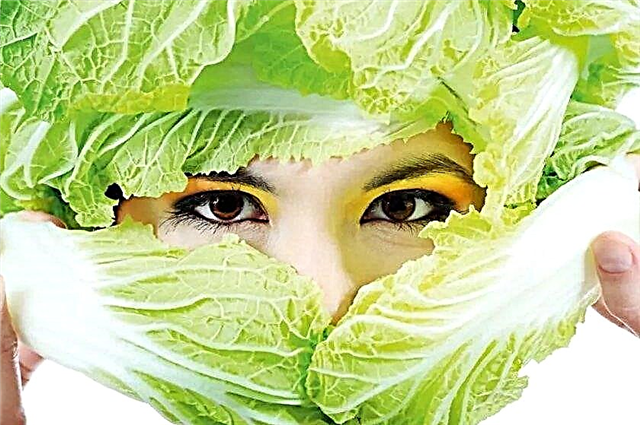 When adding cabbage juice to shampoos and hair masks, it is often possible to stop their loss and improve the overall appearance of the scalp. Typically, for the preparation of cosmetic products, the leaves of Chinese and Beijing cabbage are crushed in a blender or crushed with a rolling pin, thereby turning the product into a homogeneous gruel.
When adding cabbage juice to shampoos and hair masks, it is often possible to stop their loss and improve the overall appearance of the scalp. Typically, for the preparation of cosmetic products, the leaves of Chinese and Beijing cabbage are crushed in a blender or crushed with a rolling pin, thereby turning the product into a homogeneous gruel.
In this form, the plant can either be immediately applied to the skin with a thick layer, or additionally combined with other ingredients to enhance the therapeutic effect. With problems with gums, the leaves of the Chinese variety can simply be chewed, which will help stop their bleeding and prevent the development of acute infectious processes.
Possible contraindications
You can not use a vegetable for inflammatory processes of the digestive tract in the acute stage and with increased acidity of the stomach. It is not necessary to combine the use of a vegetable with the consumption of fresh milk and some sour-milk products, although with dosed consumption of yoghurt, side reactions are extremely rare. Chinese cabbage is poorly combined with homemade cottage cheese or fat sour cream, but its simultaneous use with fatty meat and all kinds of smoked foods can bring no less problems.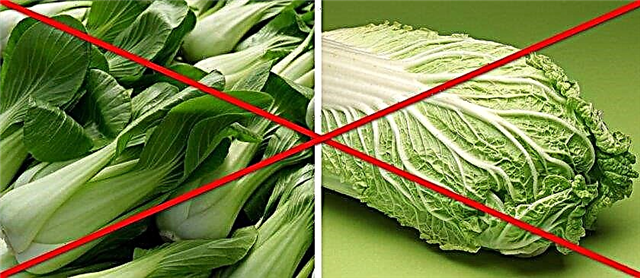 Given the large number of common characteristics and properties, it is not surprising that the contraindications to the use of both types of plants are almost identical It is undesirable to use cabbage for people prone to flatulence, since regardless of the type of preparation of the plant, the reaction of the body will only worsen. This recommendation applies to pregnant and lactating women, for whom even a small amount of vegetable can turn into a serious problem. The norm of consumption of any type of plant described for one adult per day is considered to be no more than 300 g, and if this dosage is violated, abdominal pain, signs of indigestion and nausea often occur.
Given the large number of common characteristics and properties, it is not surprising that the contraindications to the use of both types of plants are almost identical It is undesirable to use cabbage for people prone to flatulence, since regardless of the type of preparation of the plant, the reaction of the body will only worsen. This recommendation applies to pregnant and lactating women, for whom even a small amount of vegetable can turn into a serious problem. The norm of consumption of any type of plant described for one adult per day is considered to be no more than 300 g, and if this dosage is violated, abdominal pain, signs of indigestion and nausea often occur.
As you can see, Beijing and Chinese cabbage have many distinctive features, but at the same time they have a lot of common characteristics, which allows you to interchange plants not only when creating culinary dishes, but also during the preparation of medicinal and cosmetic compositions. Having picked up the most effective recipe for yourself, you can provide the body with regular replenishment of stocks of useful substances.

